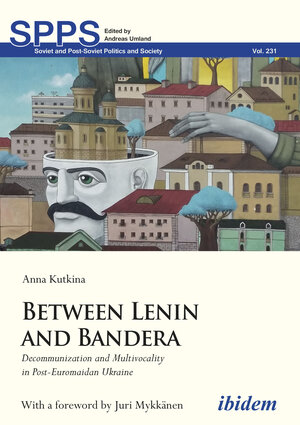
“Captivating and original work on decommunization of post-Euromaidan Ukraine. Passionately and persuasively written, this book is a daring analysis … a scientific statement of interdisciplinary value.”—Elena Trubina, Professor of Social Theory, Ural Federal University, Yekaterinburg
“Dr. Kutkina’s book, the fruit of a 7-year long ethnographic research conducted under exigent conditions, takes the reader on a fascinating interdisciplinary journey involving political science, anthropology, cultural studies, visual studies, and memory studies, navigating through the multifaceted theoretical lacunae of the borderlands, decommunization, de-Russification, post- and neo-colonialism, nationalism studies, poststructuralist and postfoundational theory as well as, in particular, the theory of hegemony and counter-hegemony, dialogism and heteroglossia, the construction of multivocality, and discourse analysis.”—András L. Pap, Professor of Law, Eötvös Loránd University (ELTE), Budapest
Between Lenin and Bandera
Decommunization and Multivocality in Post-Euromaidan Ukraine
von Anna Kutkina, Vorwort von Juri MykkänenOn 8 December 2013, Ukraine’s central Lenin monument in Kyiv was pulled down. In the following months, in what became known as the “Leninfall,” Ukraine swept away hundreds of communist monuments, expressing an explicit desire to break away from the Soviet past and, implicitly, from Russia. This book examines the evolution of post-Euromaidan de-Sovietization beyond the issues of toppling of old statues and implementation of new anti-totalitarian laws. It explores decommunization as both a political and cultural phenomenon that exposes the multivocality of the Ukrainian population and involves various forms of dialogical interaction between ordinary citizens and the state. Posters, graffiti, or street names are physical and discursive canvases where old meanings are being contested and re-articulated, and where new political symbols that combine nationalist and democratic elements are being defined.





